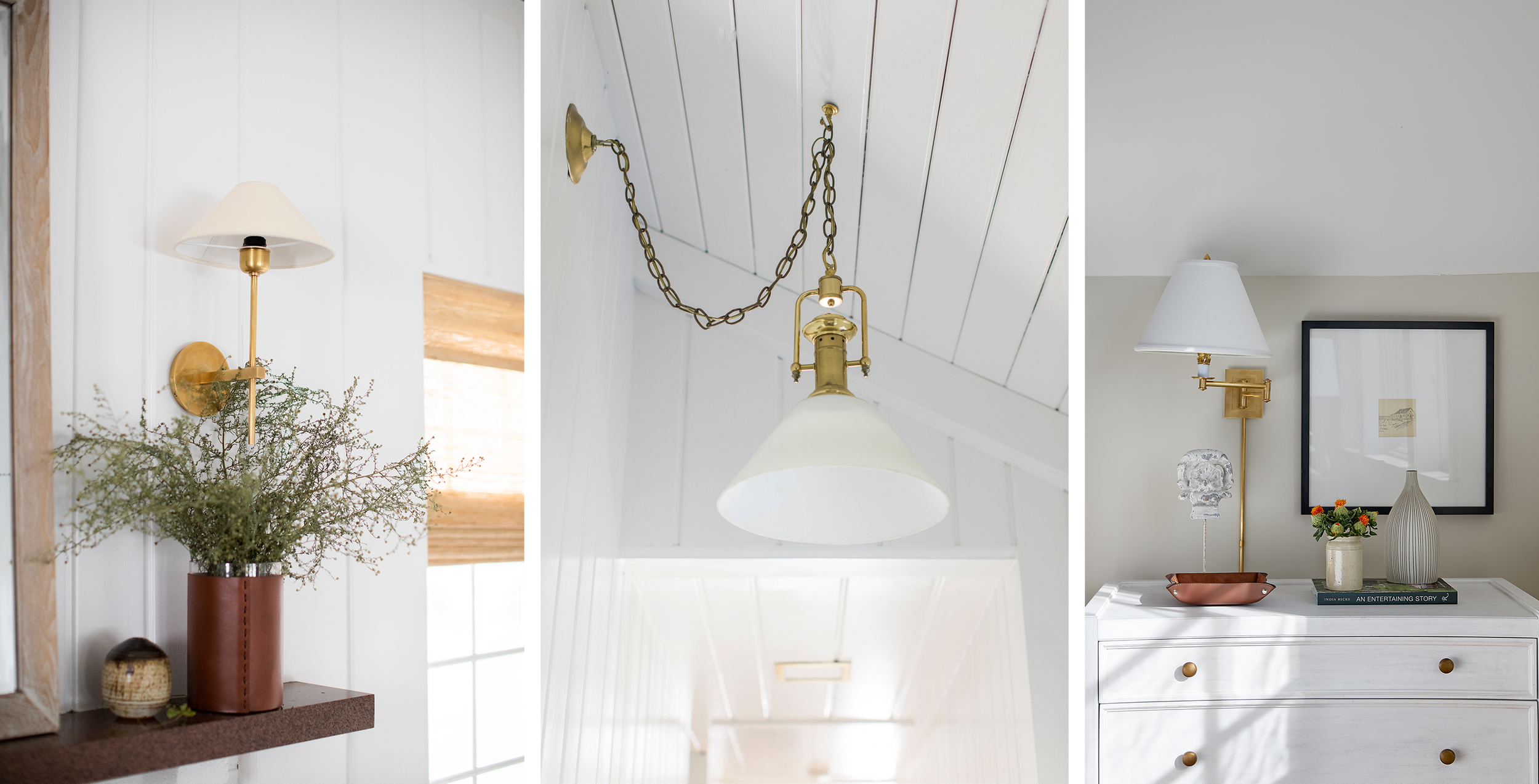Lets Talk about Lighting
Featuring our 1930’s Cottage Project - view the full project here.
The most popular question we get is how lighting can impact your home.
Just like paint colors, finding the perfect tone of lighting for your home can be a challenge. Yet, it can be one of the most powerful tools in your home for setting the atmosphere. Our designers are here to give you the facts on different lighting options along with tips and tricks for implementing them in your home.
First, lets start by discussing the 4 types of lighting: natural, ambient, task, and accent. Ensuring the right lighting options are incorporated into your home is crucial for creating the desired ambiance and functionality in each space. To implement these lighting options successfully, consider factors such as the space’s purpose, desired atmosphere, and personal style. Combine different sources of lighting to achieve balance and versatility, utilizing dimmers and smart controls for added convenience. By thoughtfully selecting and arranging lighting elements, you can transform each space.
Featuring our Curtis Point Project - view the full project here.
Natural Lighting
In most of our coastal projects, natural lighting and views to nature are the most important aspects of the design. For example in our Curtis Point project, we were inspired by the scenic landscape to bring the natural beauty in.
Yet, this can be a key feature in any home. Natural light has a warm soft glow which has the ability to enhance the aesthetic appeal of a space, making it feel inviting and tranquil.
Beyond aesthetics, natural lighting plays a crucial role in regulating our circadian rhythm, boosting mood, and increasing productivity. Exposure to natural light has been linked to improve energy levels, better concentration, and overall feelings of positivity. By harnessing the power of natural lighting, spaces can be transformed into more vibrant, dynamic environments that promote both physical and emotional wellness.
2. Ambient Lighting
Ambient Lighting is the most common type of lighting when building or renovating a home. Most clients refer to it as recessed lighting. The goal of ambient lighting is to illuminate your space. Recessed lighting can also be strategically placed to highlight specific features and guide the person in their home. For example, when working with an electrician at our Factory Street project, we placed recessed cans throughout the home with switches and dimmers that would make sense as a person entered and left each space.
However, there can be challenges to any type of lighting. Ambient lighting requires careful planning that usually occurs while building or renovating. We also have found that our clients have been opposed to ambient lighting due to aesthetics. Not only can they appear stark, but they lack the warmth that most clients want in their home.
Yet, we have found an alternative option! In our studio, we opted for mini 5” flushmounts over recessed cans. This gives any space the ambient lighting that it needs while having a warmth and decorative value.
You can shop our Launceton 5” Flushmounts here.
Featuring our Shore Drive Project - view the full project here.
3. Task Lighting
As you could imagine, task lighting is quite self explanatory. This is lighting that is placed in spaces where tasks are being preformed - a lamp on a desk, a pendant over the kitchen island, or a floor lamp in a reading nook.
While this seems straight forward, it is an essential component in any well-designed space. It can improve productivity and reduce eye strain. As featured above, our Shore Drive primary bedroom had a desk for our client to work from home. While this bedroom provided more than enough natural lighting, a lamp was important to have for a cloudy day or working late into the evening. You can shop our Terri Accent Lamp by clicking here.
4. Accent Lighting
Saving the best for last! Accent lighting, also known as decorative lighting, is where lighting can be used to add detail in a space. Decorative lighting allows for creativity and personalization in interior design. With a wide range of styles, sizes, and designs available, the options for incorporating decorative lighting into a space are endless, making it a versatile and impactful design element.
Some of our favorite ways to incorporate accent lighting are:
For mantles, we always suggest a pair of sconces on each side. This is an easy way to elevate the ambiance and sophistication of your space. In our 1930’s Cottage project, we added our Hackney Sconce to each side of the mantle to add depth to the space. The clients historical home did not have any recessed lighting so they needed as much accent lighting as possible. You can shop our Hackney sconce by clicking here.
Have open wall space that you’re not sure what to do with? Most people will opt for artwork or a mirror, yet we find that implementing a fun sconce can add quite the statement. In our Curtis Point project, we have a wall over a chaise that needed something. Finally, we fell in love an asymmetrical statement sconce that added the modern flare we needed. You can shop our Charlton sconce by clicking here.
Featuring our 1930’s Cottage Project - view the full project here.
Introducing our New Lighting Collection
At Mackenzie & Co., we not only offer expert tips and tricks on achieving the perfect lighting for any space, but also provide a wide range of lighting options for our clients and customers. This collection has been carefully curated to elevate and illuminate any space. Our collection features a wide range of styles ensuring that there is something for every room and aesthetic. You can view and shop our full lighting collection here.
In the Press
Want to read more about lighting tips and tricks? We were recently featured in Flower Magazine about A Designers Guide to Bedroom Lighting. You can read the article and learn more here.




